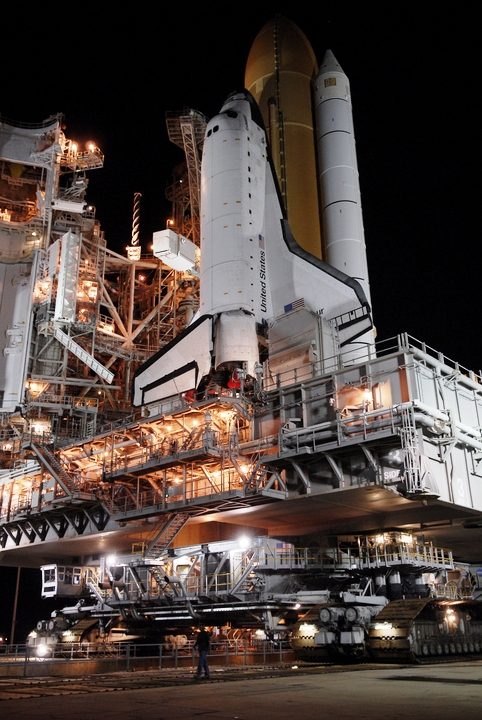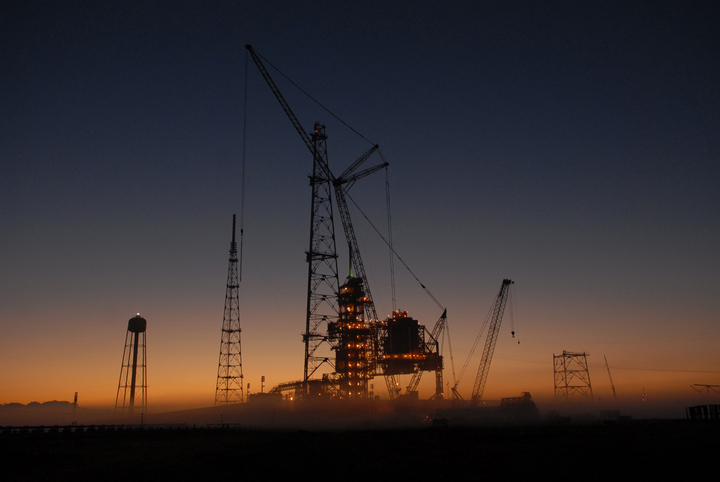Check out the news release:
RELEASE: 09-127
NASA’S SHUTTLE PROGRAM HANDS OVER LAUNCH PAD TO CONSTELLATION
CAPE CANAVERAL, Fla. — The May 31 transfer of Launch Pad 39B at NASA’s Kennedy Space Center in Florida from the Space Shuttle Program to the Constellation Program is the next step in preparing the first flight test of the agency’s next-generation spacecraft and launch system. The Constellation Program is developing new spacecraft — including the Ares I and Ares V launch vehicles, the Orion crew capsule, and the Altair lunar lander — to carry humans to the International Space Station, the moon and beyond.
Since the late 1960s, pad B has been instrumental in human spaceflight programs, such as Apollo, Skylab and the space shuttle. The pad originally was built for the Saturn V rockets to launch the Apollo capsules to the moon. In July 1975, the pad was modified to support space shuttle operations. The first space shuttle to lift off from pad B was Challenger in January 1986.
The handover took place Sunday after space shuttle Endeavour was moved to Launch Pad 39A. The ground operations team will finish modifying pad B for the Ares I-X rocket launch. Modifications will include removing the orbiter access arm and a section of the gaseous oxygen vent arm and installing access platforms and a vehicle stabilization system.


